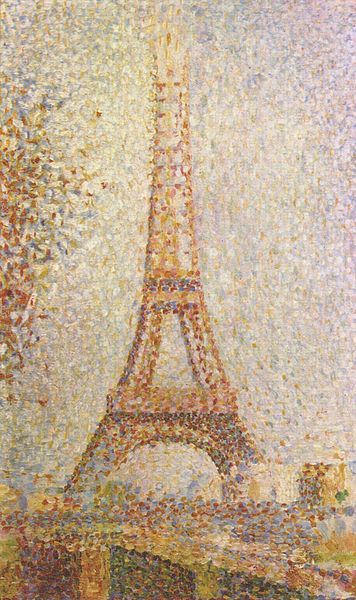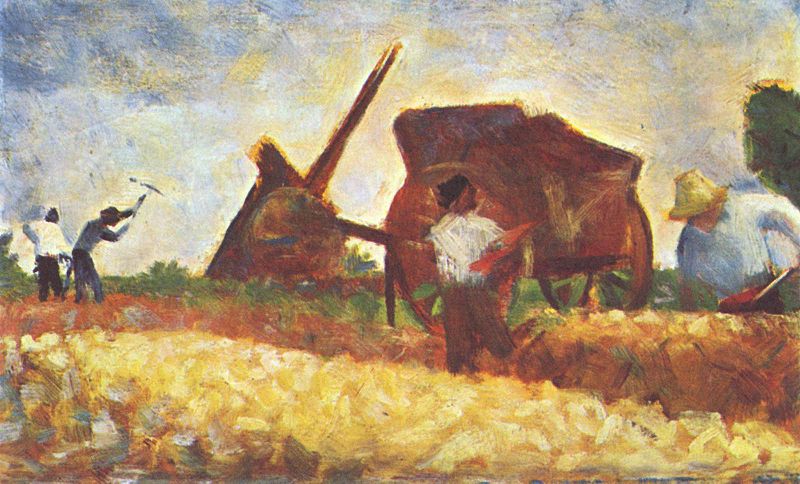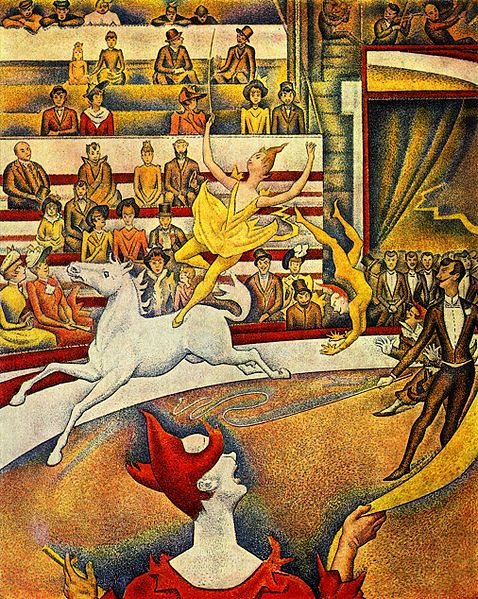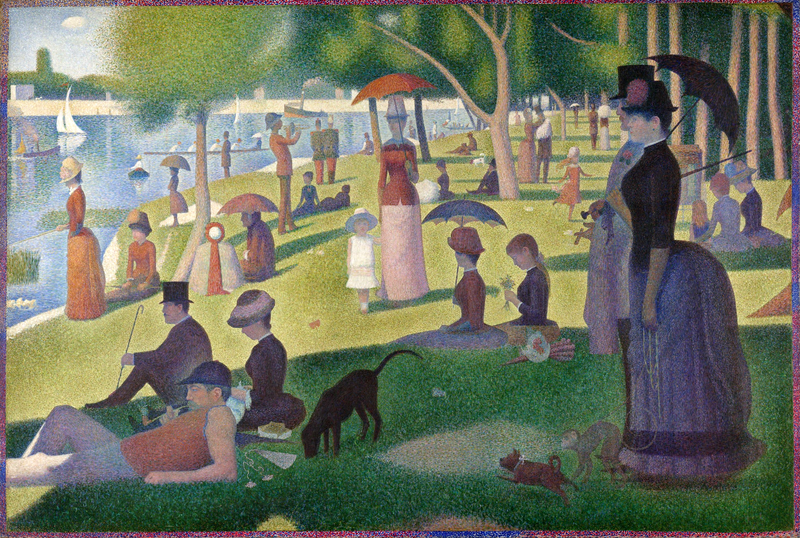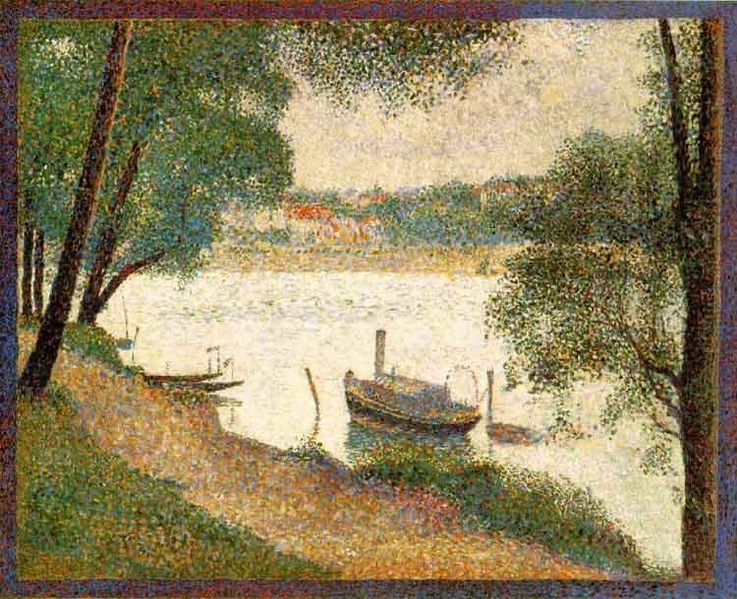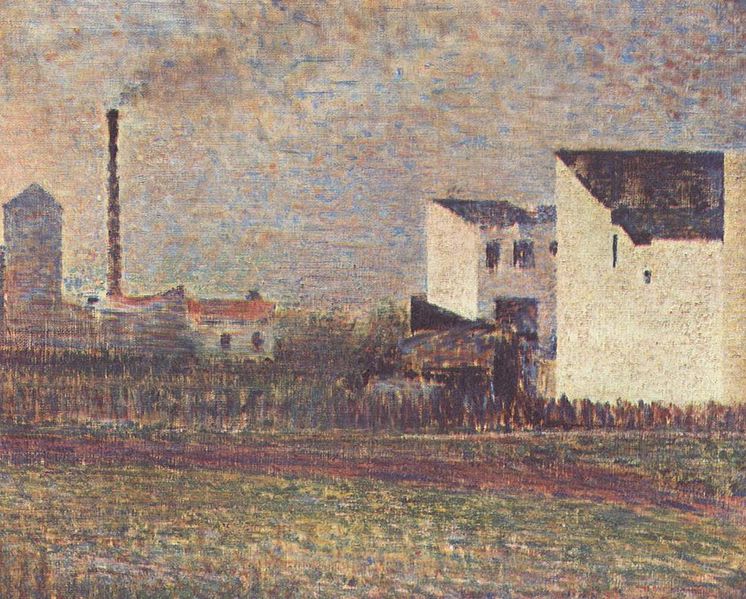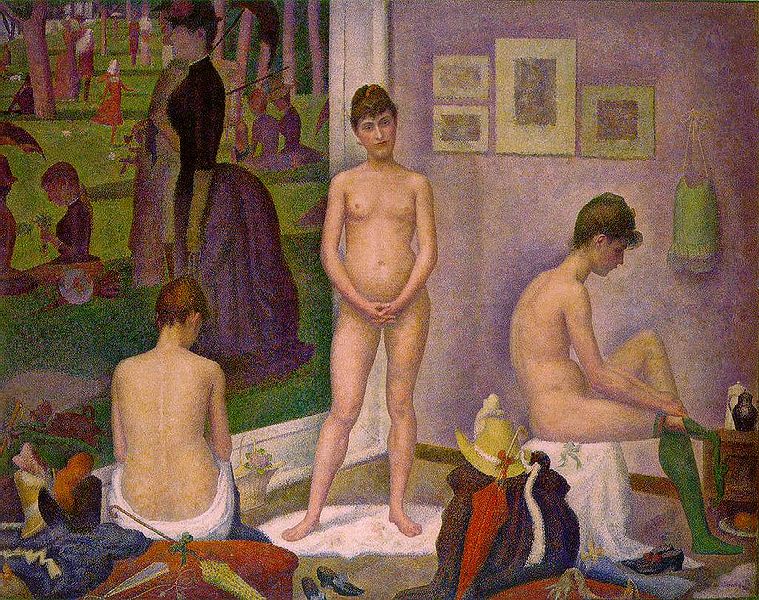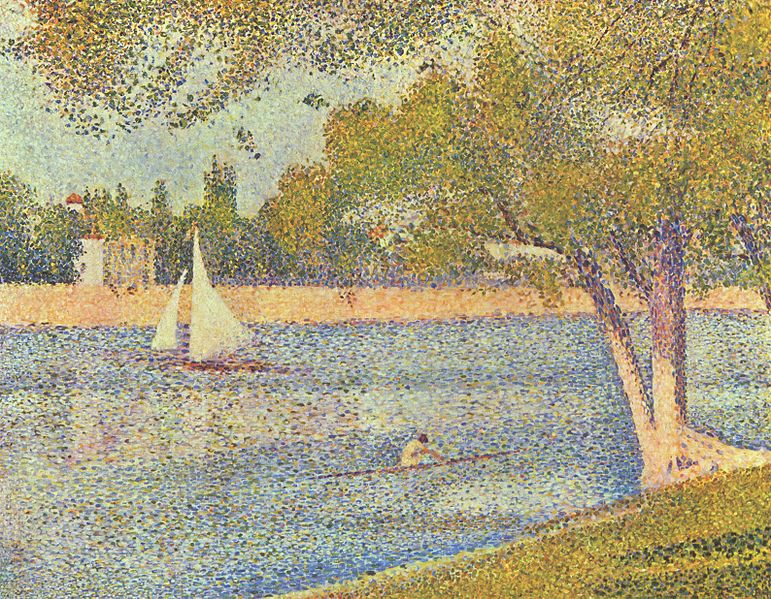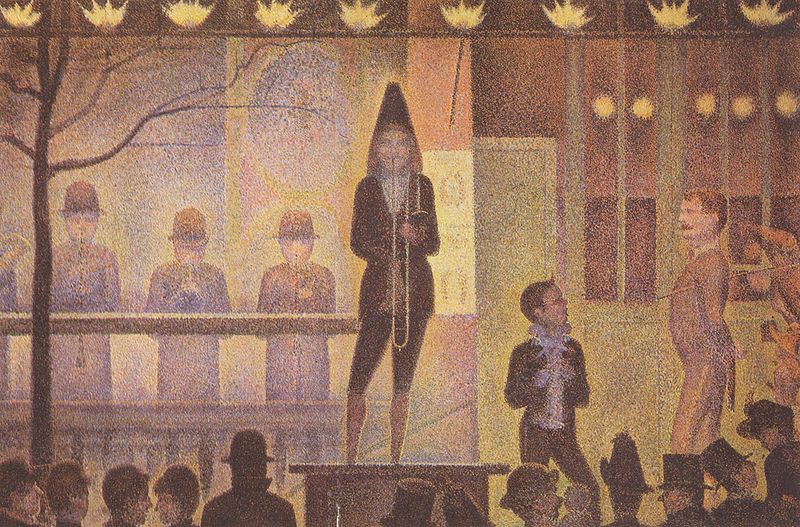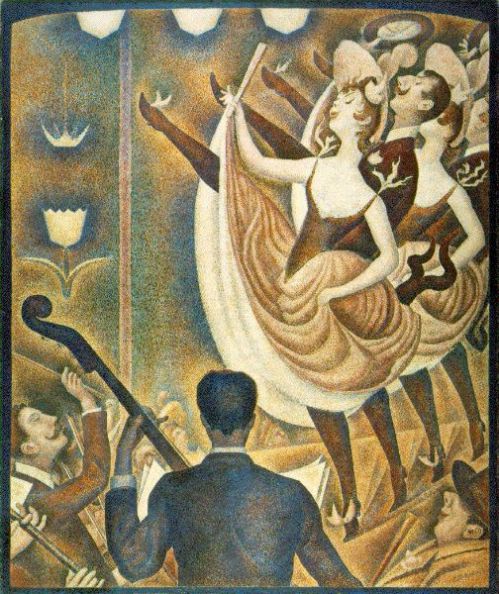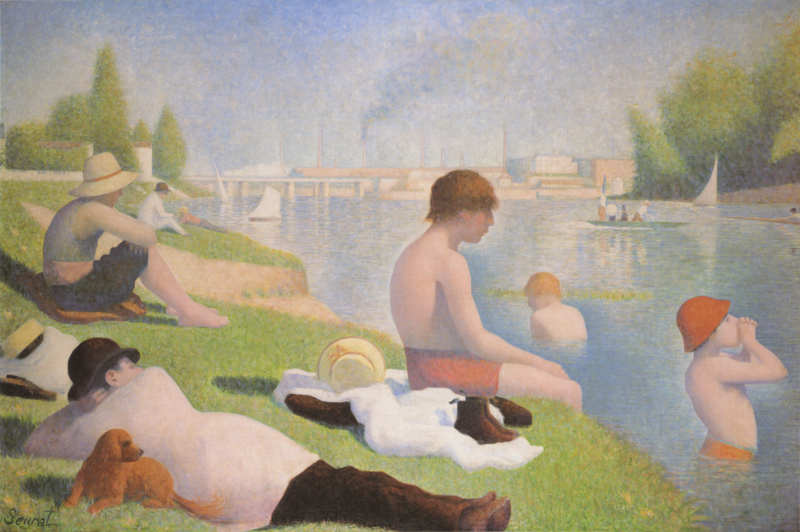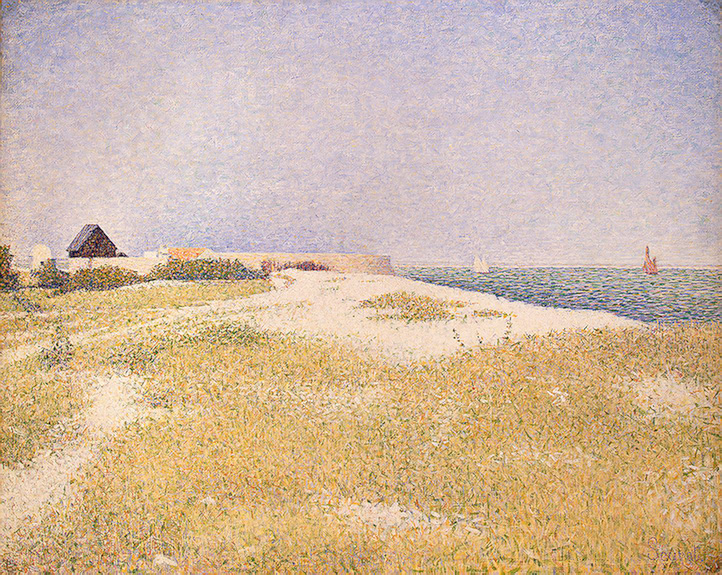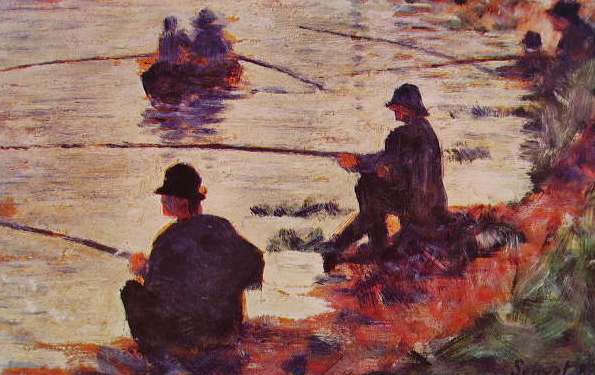<Back to Index>
- Painter Georges - Pierre Seurat, 1859
PAGE SPONSOR
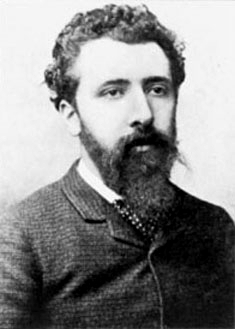
Georges-Pierre Seurat (2 December 1859 – 29 March 1891) was a French Post - Impressionist painter and draftsman. He is noted for his innovative use of drawing media and for devising a technique of painting known as pointillism. His large scale work A Sunday Afternoon on the Island of La Grande Jatte (1884 – 1886), Seurat's most famous painting, altered the direction of modern art by initiating Neo - impressionism, and is one of the icons of 19th century painting.
Seurat was born into a wealthy family in Paris, France. His father, Antoine Chrysostom Seurat, was a legal official and a native of Champagne; his mother, Ernestine Faivre, was Parisian. Georges Seurat first studied art with Justin Lequien, a sculptor. Seurat attended the École des Beaux - Arts in 1878 and 1879. After a year of service at Brest Military Academy, he returned to Paris in 1880. He shared a small studio on the Left Bank with two student friends before moving to a studio of his own. For the next two years he devoted himself to mastering the art of black - and - white drawing. He spent 1883 on his first major painting — a huge canvas titled Bathers at Asnières.
After his painting was rejected by the Paris Salon, Seurat turned away from such establishments, instead allying himself with the independent artists of Paris. In 1884 he and other artists (including Maximilien Luce) formed the Société des Artistes Indépendants. There he met and befriended fellow artist Paul Signac. Seurat shared his new ideas about pointillism with Signac, who subsequently painted in the same idiom. In the summer of 1884 Seurat began work on his masterpiece, A Sunday Afternoon on the Island of La Grande Jatte, which took him two years to complete.
Later he moved from the Boulevard de Clichy to a quieter studio nearby, where he lived secretly with a young model, Madeleine Knobloch, whom he portrayed in his painting "Jeune femme se poudrant". In February 1890 she gave birth to his son, who was given the first name of Pierre Georges.
Seurat
died in Paris on 29 March 1891. The cause of Seurat's death is
uncertain, and has been attributed to a form of meningitis, pneumonia,
infectious angina, and / or (most probably) diphtheria. His son died two weeks later from the same disease. His last ambitious work, The Circus, was left unfinished at the time of his death.
During the 19th century, scientist - writers such as Michel Eugène Chevreul, Ogden Rood and David Sutter wrote treatises on color, optical effects and perception. They were able to translate the scientific research of Helmholtz and Newton into a written form that was understandable by non - scientists. Chevreul was perhaps the most important influence on artists at the time; his great contribution was producing a color wheel of primary and intermediary hues.
Chevreul was a French chemist who restored old tapestries. During his restorations of tapestries he noticed that the only way to restore a section properly was to take into account the influence of the colors around the missing wool; he could not produce the right hue unless he recognized the surrounding dyes. Chevreul discovered that two colors juxtaposed, slightly overlapping or very close together, would have the effect of another color when seen from a distance. The discovery of this phenomenon became the basis for the Pointillist technique of the Neo - impressionist painters.
Chevreul also realized that the 'halo' that one sees after looking at a color is actually the opposing, or complementary, color. For example: After looking at a red object, one may see a cyan echo / halo of the original object. This complementary color (as an example, cyan for red) is due to retinal persistence. Neo - impressionist painters interested in the interplay of colors made extensive use of complementary colors in their paintings. In his works Chevreul advised artists that they should not just paint the color of the object being depicted, but rather they should add colors and make appropriate adjustments to achieve a harmony. It seems that the harmony Chevreul wrote about is what Seurat came to call 'emotion'.
According to Professor Anne Beauchemin from McGill University, most Neo - impressionist painters probably did not read Chevreul's books, but instead they read Grammaire des arts du dessin, written in 1867 by Charles Blanc, who cited Chevreul's works. Blanc's book was targeted at artists and art connoisseurs. Color had an emotional significance for him, and he made explicit recommendations to artists which were close to the theories later adopted by the Neo - impressionists. He said that color should not be based on the 'judgment of taste', but rather it should be close to what we experience in reality. Blanc did not want artists to use equal intensities of color, but rather to consciously plan and understand the role of each hue.
Another important influence on the Neo - impressionists was Ogden Rood, who also studied color and optical effects. Whereas the theories of Chevreul are based on Newton's thoughts on the mixing of light, Rood's writings are based on the work of Helmholtz, and as such he analyzed the effects of mixing together and juxtaposing material pigments. For Rood, the primary colors were red, green, and blue - violet. Like Chevreul, he stated that if two colors are placed next to each other, from a distance they look like a third distinctive color. Rood also pointed out that the juxtaposition of primary hues next to each other would create a far more intense and pleasing color when perceived by the eye and mind than the corresponding color made by mixing paint. Rood advised that artists be aware of the difference between additive and subtractive qualities of color, since material pigments and optical pigments (light) do not mix together in the same way:
- Material pigments: Red + Yellow + Blue = Black
- Optical / Light : Red + Green + Blue = White
Other influences on Seurat included Sutter's Phenomena of Vision (1880) in which he wrote that "the laws of harmony can be learned as one learns the laws of harmony and music", as well as mathematician Charles Henry who in the 1880s delivered monologues at the Sorbonne about the emotional properties and symbolic meaning of lines and color. Henry's ideas were quickly adopted by the founder of Neo - impressionism.
Seurat took to heart the color theorists' notion of a scientific approach to painting. Seurat believed that a painter could use color to create harmony and emotion in art in the same way that a musician uses counterpoint and variation to create harmony in music. Seurat theorized that the scientific application of color was like any other natural law, and he was driven to prove this conjecture. He thought that the knowledge of perception and optical laws could be used to create a new language of art based on its own set of heuristics and he set out to show this language using lines, color intensity and color schema. Seurat called this language Chromoluminarism.
His letter to Maurice Beaubourg in 1890 captures his feelings about the scientific approach to emotion and harmony. He says "Art is Harmony. Harmony is the analogy of the contrary and of similar elements of tone, of color and of line, considered according to their dominance and under the influence of light, in gay, calm or sad combinations".
Seurat's
theories can be summarized as follows: The emotion of gaiety can be
achieved by the domination of luminous hues, by the predominance of warm
colors, and by the use of lines directed upward. Calm is achieved
through an equivalence / balance of the use of the light and the dark,
by
the balance of warm and cold colors, and by lines that are horizontal.
Sadness is achieved by using dark and cold colors and by lines pointing
downward.
A Sunday Afternoon on the Island of La Grande Jatte shows members of each of the social classes participating in various park activities. The tiny juxtaposed dots of multi - colored paint allow the viewer's eye to blend colors optically, rather than having the colors physically blended on the canvas. It took Seurat two years to complete this 10 foot wide (3.0 m) painting, much of which he spent in the park sketching in preparation for the work (there are about 60 studies). It is now in the permanent collection of the Art Institute of Chicago.
Seurat made several studies for the large painting including a smaller version, Study for A Sunday Afternoon on the Island of La Grande Jatte (1884 – 1885), that is in the collection of the Metropolitan Museum of Art, in New York City.
